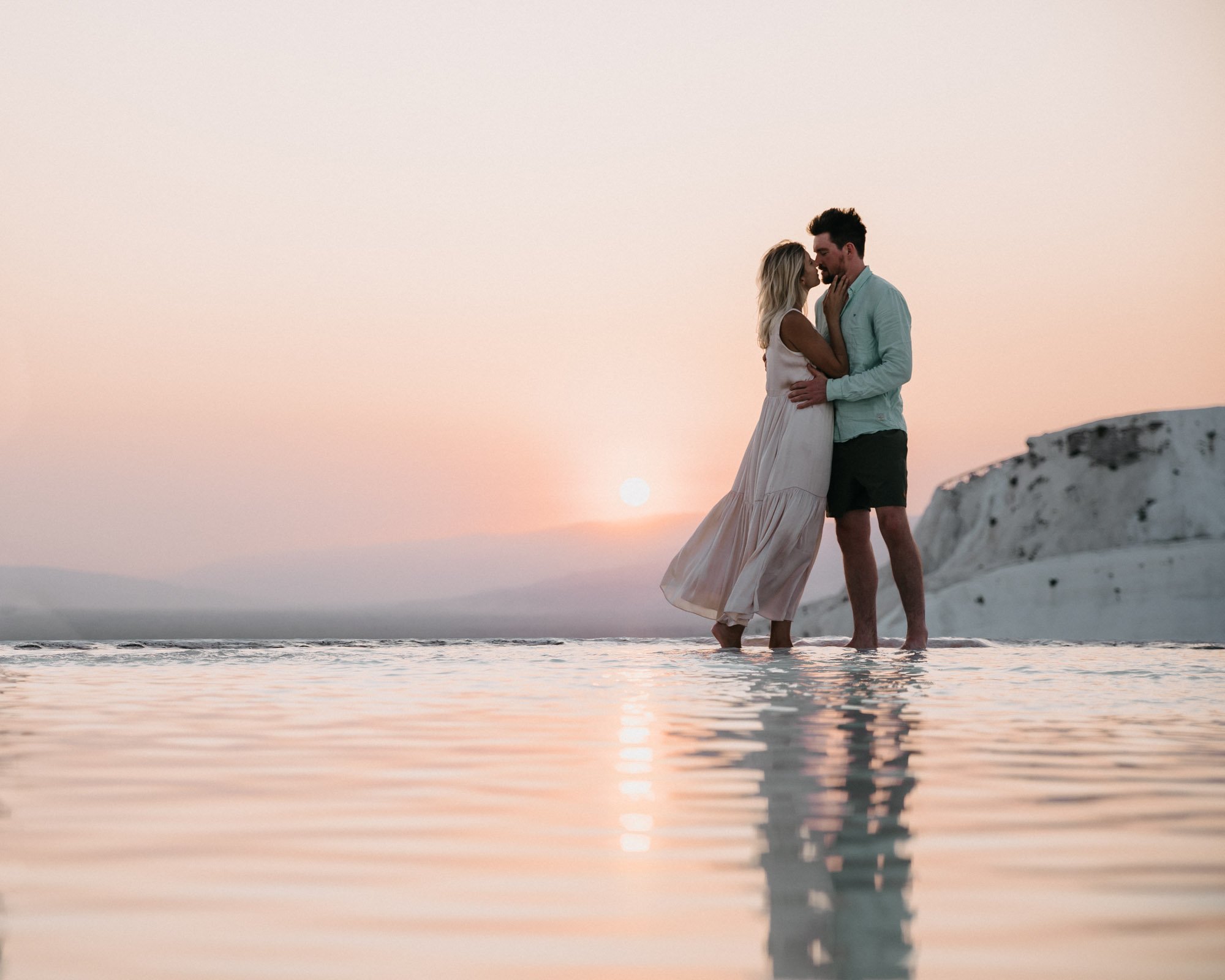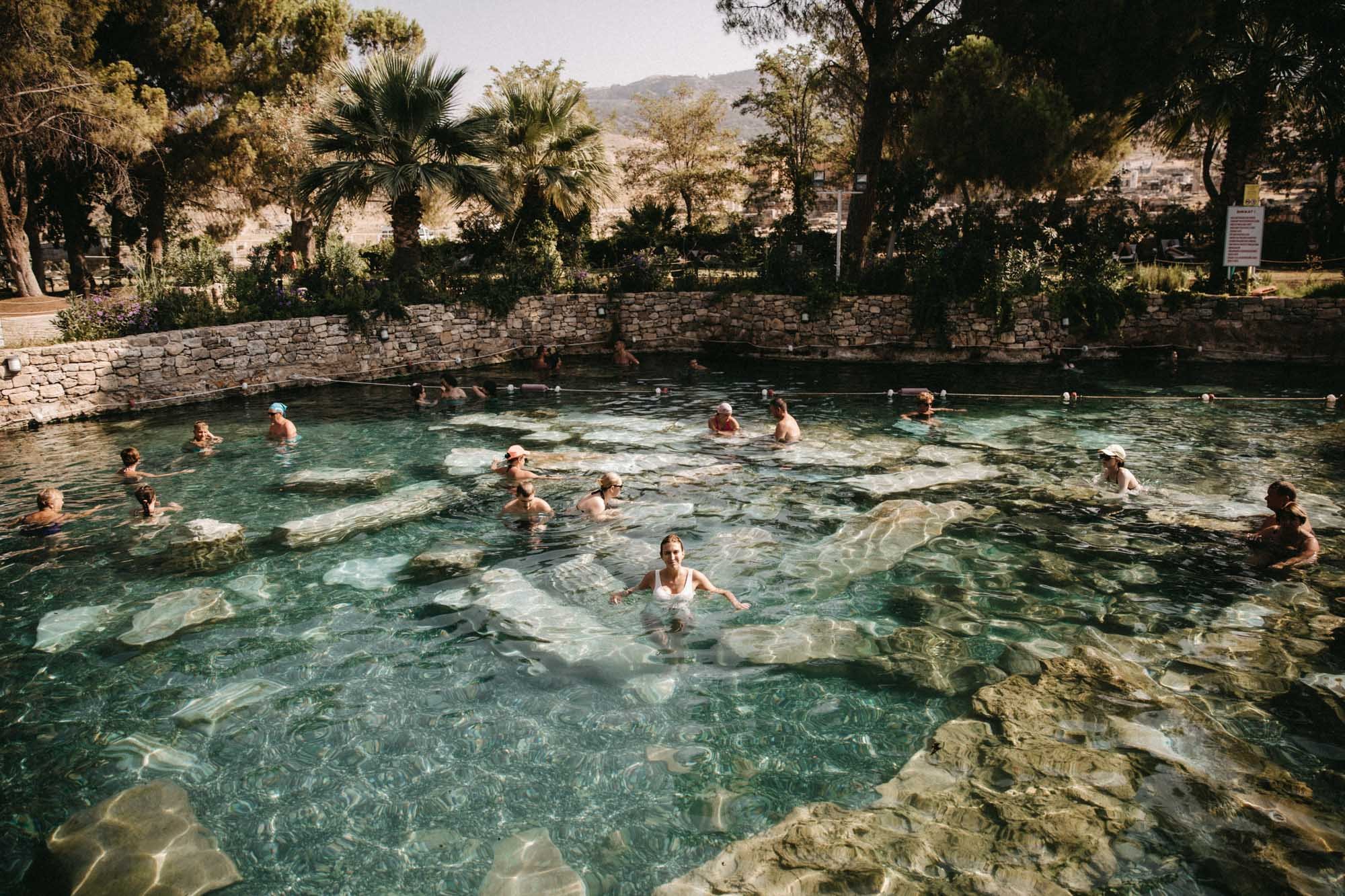Essential Guide To Pamukkale
Pamukkale translates to ‘Cotton Castle’ and is famous for it’s white travertine thermal pools. We were stunned by this natural wonder. The snow-like surface is so different from the surrounding desert landscape. This is how we recommend you spend your time here.
How to get here?
We rented a car in Istanbul, drove 5 hours to Selcuk, spent 1 night in Selcuk and then drove 3 hours to Pamukkale, where we spent the night. It was a 7 hour drive back to Istanbul.
The closest big city is Denizli and you can fly here from Istanbul. Shuttle buses run between the airport and Pamukkale.
There are also many buses coming from Istanbul and other major cities.
Where to stay?
We stayed at Hotel Sahin in the centre of Pamukkale. It is 300 metres from the town entrance to the thermal pools and we could see the white mountain from our room. The room was basic but it was in a great location and reasonably priced.
Not many people stay in the village. We were surprised that when we came down off the mountain after sunset it was a ghost town, a complete transformation from a couple of hours before.
Where to eat?
There weren't many food options for dinner after sunset but we found a nice restaurant called Mom Eve. It had a stunning view of the white mountain.
Travertine Thermal Pools
There are 3 different entrances to Pamukkale Hierapolis: Pamukkale town entrance, South Gate and North Gate. These entrances grant you access to the Travertine Thermal Pools and Hierapolis Ancient City.
The calcium rich water forms this white sediment on the limestone terraces. You have to remove your footwear before walking on it. It feels nice underfoot and isn’t too slippery even when wet. However, we did see some slips and falls into trenches when the light faded.
Walking into the crisp water the ground becomes soft underneath and kicks up a powdery like substance. Untouched, these pools turn into mirrors.
We were here at the end of the peak season in late August. To beat the crowds and heat visit at Sunrise or Sunset. We visited at both times and preferred sunrise as there were less people. The Pamukkale Town Entrance is open from 8am-8pm. We entered about 30 minutes before the gate closed but we were allowed to stay on the mountain after 8pm. For sunrise we wanted to be on the mountain earlier so we drove 2.4km to the South Gate which opens at 6.30am. Click here to view the location of the South Gate on Google Maps
You can get tickets at the gates for 110 Turkish Lira TL (11€). If you park at the North and South Gates it will cost an additional 5 TL.
On the drive to the South Gate we passed Hot Air Balloons preparing to take off. Ballooning and paragliding are very popular here. The car park is located at the top of the mountain so we had a 1km walk through an area of ancient ruins. Hot Air Balloons started to fill the sky and some came very close to the mountain. We were the first people on the mountain so we could choose the best pools to take photos from.
Cleopatra Pools
After the sunrise photoshoot, we walked back up the hill to the Cleopatra Pools. These pools are also fed by the springs but are very different from the lower travertine pools. The main difference is the temperature of the water. The Cleopatra Pools are much warmer. You can bathe in the same waters where Cleopatra once swam. During this ancient time, a Roman temple surrounded the pools. Today, trees surround the pools and the ruins are submerged in the water. We sat in the shallow water and rested against ornate columns.
We locked our things in a locker. The key is attached to a wristband so you can carry it with you. It’s open from 9am to 7pm and costs 50 TL. It is an additional 10 TL for a locker. You should bring your own towel. It is free to enter the garden and sit beside the pool if you don’t want to swim.
Hierapolis Ancient City
Ancient ruins cover the mountain and there is a Museum next to the Cleopatra Pools. The Archaeological Museum is in a former bath house and features halls with excavated tombs, statues and small artefacts.
We walked further up the hill to the Theatre. It is the most impressive and preserved Ancient building on the mountain. It was built in the 2nd century AD under the Roman Emperor and can hold 15,000 people.




